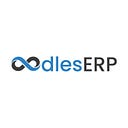Selecting The Right Software Architecture For ERP SaaS App Development
The software as a service (SaaS) model has become increasingly popular amongst enterprises for its unquestionable benefits over on-premise systems. A large number of businesses from all major industries including startups, SMBs, and large-scale enterprises have invested in ERP SaaS app development to strengthen their IT infrastructure. Besides, the availability of several cloud service providers makes it convenient for enterprises to avail the unique benefits of SaaS. However, it is crucial to select the right SaaS architecture that best addresses your business requirements at the lowest cost.
When it comes to SaaS app development, there are mainly two types of software architectures i.e single-tenant and multi-tenant. In this blog post, we drive you through the most important characteristics of both multi-tenant and single-tenant SaaS architectures from the business users’ perspective.
Single-tenant SaaS App Development
The single-tenant SaaS architecture is where a single user or client has a dedicated software instance rather than sharing a common software. In a single-tenant architecture, we require a logically isolated hardware infrastructure to run the software instances. In doing so, the single-tenant SaaS architecture provides complete autonomy to business users for independent software use. At the same time, it renders complete control over the user interface so that users can customize it as per their business needs.
Moreover, they do not need to alter or modify the underlying code for customizing the user interface. Single-tenant software applications are usually expensive and are mostly used by large-scale enterprises that require private cloud services.
Key Features and Characteristics
Below are the main software features and characteristics of the single-tenant SaaS architecture:
- Since the complete server is reserved for a single user, it offers the highest level of data security and user privacy.
- Customers get better support for data backups as it creates data backups independently for different users. Single-tenant applications also render the best support for data restoration and disaster recovery.
- With a single-tenant SaaS architecture, customers gain better control of the application UI, its features, and software upgrades.
- The performance of the entire application may be impacted by the actions being performed by other users.
- With single-tenant systems, it is relatively easier to migrate the application to self-hosted environments.
Multi-tenant SaaS App Development
Now that we are familiar with the concept of single-tenant SaaS, it is quite easy to understand the multi-tenant model. In the multi-tenant SaaS architecture, multiple business users share a single instance of the software rather than having a dedicated software database. In other words, every single software instance caters to the diverse needs of multiple business users. As compared to its single-tenant counterpart, the multi-tenant SaaS model is more useful and cost-effective since you only purchase a small part of the database. However, one can upgrade it anytime in accordance with the growing business needs.
This type of software architecture is best suited for startups and small-to-medium enterprises having limited computing resources and storage requirements. Let us now take a look at the main characteristics of the multi-tenant SaaS architecture.
Key Features and Characteristics
The main features and software characteristics of the multi-tenant SaaS architecture are as follows:
- The multi-tenant SaaS architecture offers reduced hardware complexities and incurs lower hardware and software infrastructure costs.
- Since multiple users or clients share the same database, it significantly reduces software maintenance costs as compared to single-tenant applications.
- Cloud vendors are responsible for rolling out new software upgrades i.e the users have limited control over the application and its features.
- The multi-tenant applications are scalable and fully customizable as per the varying business needs and requirements.
- The applications have a simple installation and setup procedure and are easy to configure without altering the underlying codebase.
- Despite the limited database strength, the applications have enormous computational power and offer optimum performance and resource utilization.
- Best suited for startups and small-to-medium enterprises
The Final Words
Software as a service is definitely one of the most sought-after software models that is rapidly replacing traditional on-premise systems. However, it is critical to choose the right software model to extract the real benefits of SaaS application development. After analyzing the main characteristics of both single-tenant and multi-tenant SaaS architectures, you can easily determine the right choice for your business. Single-tenant SaaS solutions are more expensive and are best suited for large-scale organizations having enormous data storage requirements. On the other hand, multi-tenant SaaS solutions are quite affordable and yet possess enormous computing capacities. For this reason, they are best suited for startups, SMBs, and small-scale enterprises while also addressing some requirements for large-scale enterprises all along.
Why Choose Oodles For SaaS Application Development Services?
We have successfully established ourselves as a 360-degree SaaS app development company with a proven track record in building next-gen business solutions. Our team of developers is skilled at using the latest tools and technologies to build performance-driven software solutions to deliver engaging user experiences. We have successfully completed several full-scale SaaS-based projects for startups, SMBs, and large-scale companies. Our end-to-end SaaS app development services focus on enhancing user experiences across devices by building feature-rich software applications that are easy to scale. For project-related queries, reach out at erp@oodles.io.
